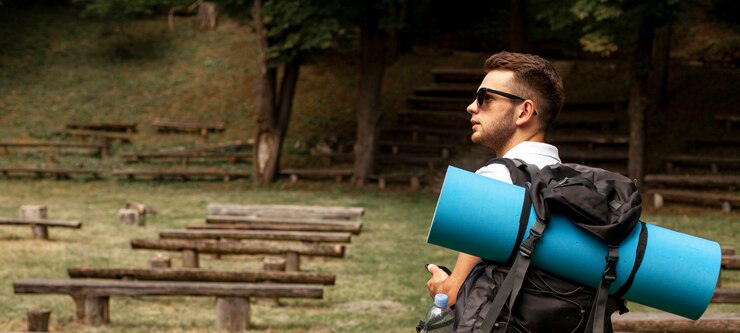
1. **A Camper’s Guide to 10 Unique Ways to Sleep Under the Stars**
2. **From Tents to Treehouses: 10 Camping Styles Worth Exploring**
3. **10 Camping Styles Every Outdoor Enthusiast Should Try**
4. **The Many Faces of Camping: 10 Adventures for Every Camper**
5. **Camping, Your Way: 10 Styles to Match Every Explorer’s Spirit**
6. **10 Distinct Camping Experiences for Nature Lovers**
7. **Explore the Outdoors: 10 Camping Variations for Every Kind of Camper**
8. **10 Ways to Camp That Go Beyond the Basics**
9. **Camping Reimagined: 10 Styles to Suit Every Wilderness Wanderer**
10. **10 Outdoor Living Styles Every Camper Should Experience**
Let me know if you’d like the tone to be more formal, playful, or tailored to a specific audience!
Camping is a great way to take a break from the daily grind and enjoy a simpler, more peaceful lifestyle, even if just for a little while. It’s been around for ages, and over time, people have come up with all sorts of ways to do it. Here’s a rundown of ten popular camping styles that every camper should know.
**Tent Camping**
This is the classic camping experience. You drive to a campsite or park, set up your tent, and spend a few nights there. Most of your time is spent hiking or exploring, while the tent is mainly for sleeping and storing your stuff. Some seasoned campers prefer to pitch their tents in more remote, off-the-grid spots. Tent camping is budget-friendly and ideal for beginners, couples, or families. When choosing a tent, think about how many people are going and what the weather will be like. For summer trips, a tent with a screen room is a great option—it lets in sunlight while keeping bugs out.
**Backpacking**
Backpacking is like tent camping, but with a twist—you carry everything you need on your back as you hike through nature. Instead of returning to the same campsite each night, you keep moving and set up camp wherever you end up. It’s perfect for adventurous folks who enjoy being self-reliant and are in good physical shape, since you’ll be carrying your gear for long stretches.
**RV Camping**
If you love the outdoors but aren’t keen on sleeping in a tent, RV camping might be your thing. It offers more comfort and protection from the elements, plus you get amenities like a stove, fridge, and bathroom. The downside? You can’t take an RV everywhere. If you want to explore deeper into the woods, you’ll need to park and continue on foot or by bike.
**Glamping**
Short for “glamorous camping,” glamping combines the beauty of nature with the comforts of a hotel. You can stay in unique accommodations like treehouses, eco-lodges, or mountaintop teepees. It’s a great option if you want to enjoy the outdoors without giving up luxury.
**Survival Camping**
This is the most extreme form of camping. The goal is to head into the wild with minimal gear and no food, relying on your survival skills to make it through. It’s not for beginners—you’ll need to be in excellent shape and know how to do much more than just pitch a tent or treat a minor injury.
**Primitive Camping**
Primitive camping is a step down from survival camping in terms of difficulty. You still bring a tent and some supplies, but you skip the usual campsite amenities. You’ll need to cook your own meals, find water, and maybe even forage for food. It’s all about being self-sufficient, but without the intense demands of survival camping.
**Car Camping**
If you don’t have much gear or don’t want to spend a lot, car camping is a simple and affordable option. Just drive to a scenic spot, fold down the seats in your hatchback, and set up a cozy sleeping area with a pad and some blankets. It’s not fancy, but it gets the job done.
**Canoe Camping**
Canoe camping is similar to backpacking, except you travel by water. You carry your gear in a canoe or kayak and set up camp when you stop for the night. One big advantage is that you can bring more stuff with you. Plus, you can reach remote areas that are hard to get to on foot. Just be cautious—bad weather can make water travel risky.
**Overlanding**
If you have a 4×4 vehicle like a jeep or truck, overlanding might be for you. It’s a mix of off-roading and camping, where you travel through remote areas and set up camp along the way. These trips usually last several days and cover long distances, offering a real sense of adventure.
**Winter Camping**
Camping in the winter isn’t for everyone, but it can be incredibly rewarding. There are fewer bugs and crowds, and the snowy landscapes are stunning. However, it takes serious preparation. You’ll need specialized gear like winter sleeping bags, thermal clothing, and stoves that work in cold weather. You also need to know how to stay warm, find water, cook food, and build a fire.
Each of these camping styles has its own appeal and challenges. Some, like winter or survival camping, require more skill and preparation than others. Before you head out, make sure you’re ready for the experience you choose. Having the right tools is just as important as having the right knowledge. Essentials like cooking gear, rechargeable lights, navigation tools, and communication devices can make a big difference in your safety and enjoyment. The more prepared you are, the better your camping adventure will be.